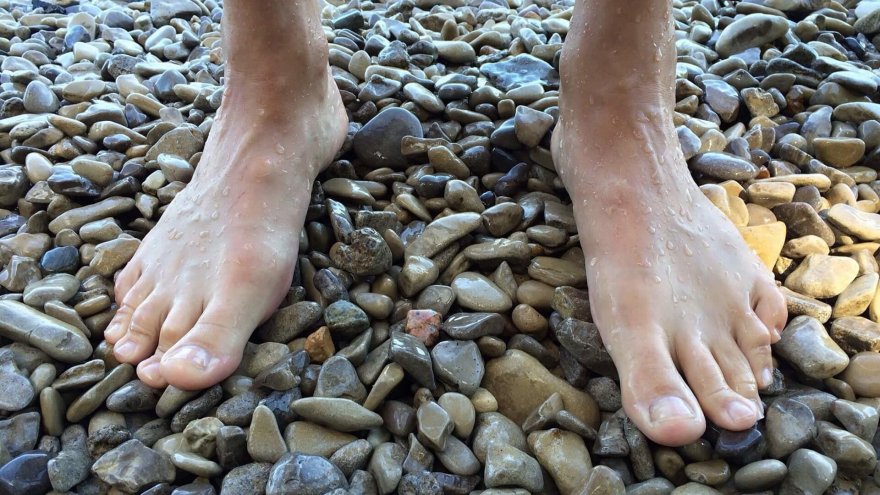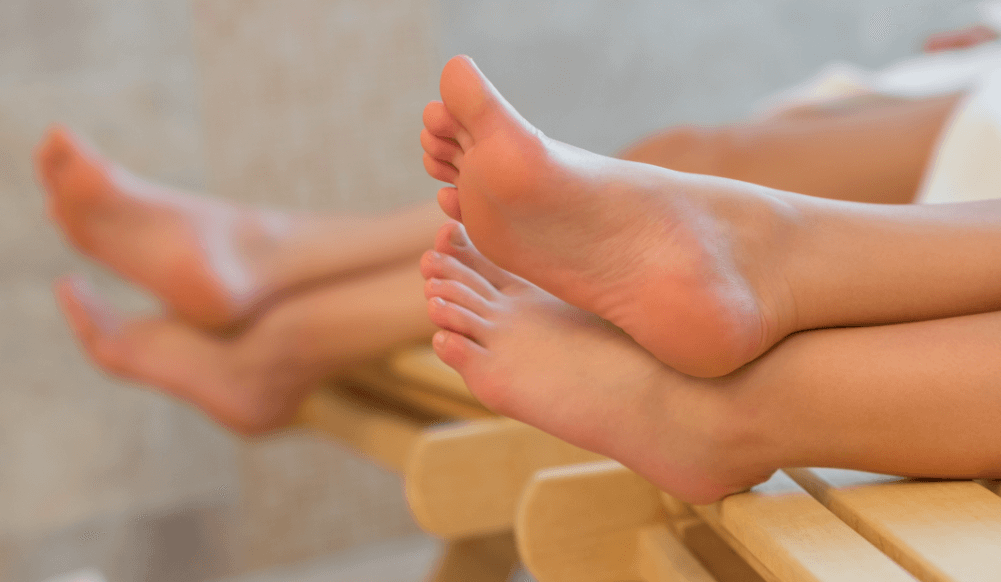Foot Core: What It Is and How to Strengthen It

Of course, everyone is familiar with the abdominal core muscle. Some are probably extremely familiar with them as they work hard to achieve that six-pack. And a strong core is critical to supporting the back and having good posture and by extension, good running form and improved athletic performance.
But, according to researchers Patrick O. McKeon (Ithaca College), Jay Hertel (University of Virginia), Dennis Bramble (University of Utah) and Irene Davis (Harvard Medical School), you have a foot core as well and it is just as important as your abdominal core in both static postures, like standing, or dynamic movement, like running.
What is the Foot Core?
The authors note that the arch, which has evolved over time as humans began to run and place more loads of force on the foot, is controlled by both intrinsic and extrinsic muscles. They contend, in an article published in the British Medical Journal in 2015, that clinicians, researchers and therapists have mostly ignored the intrinsic foot muscles, instead focusing on the extrinsic muscles to support the foot and correct any underlying issues.

According to McKeon and colleagues, the foot core is the arch of the foot, which includes “four layers of plantar intrinsic muscles that originate and insert on the foot.” Every time you take a step, these plantar muscles control how much and how fast your arch changes from its resting state as forces are placed on it. The researchers assert that when these muscles don’t work properly, the arch becomes misaligned which results in abnormal movement of the foot. This repetitive misalignment and abnormal movement can result in injuries of the foot, such as plantar fasciitis.
The study authors also explain that deformation and abnormal movement of the arch because of weakness in plantar intrinsic muscles may play a part in posterior tibial tendon dysfunction, medial tibial stress syndrome and chronic lower leg pain.
Do You Need to Strengthen Your Foot Core?
Because the role of intrinsic foot muscles has been historically overlooked by clinicians, there are only a few cases—diabetic neuropathy and claw toes—in which the strength of intrinsic foot muscles are measured. And although there are a number of ways to test the strength of the intrinsic muscles, because it isn’t done routinely, there is no common method of assessment.
McKeon and his colleagues propose a test that gauges the patient’s ability to maintain a neutral foot position and consistent arch height while standing on one leg for 30 seconds.

If you have a foot condition—such as plantar fasciitis, morton’s neuroma, bursitis, or Achilles tendinitis—a leg issue such as stress fracture, shin splints, patella-femoral pain syndrome, hip impingement—or even low back pain, these may all stem from a week foot core.
How to Strengthen Your Foot Core
One of the easiest ways to work your foot core is to walk around barefoot, conditions permitting, of course. McKeon contends that when we wear shoes, intrinsic muscles play less of a role in foot movement and shock absorption, which causes the extrinsic muscles of the foot to overcompensate, even past the point of exhaustion or repair. Because the extrinsic muscles then don’t work properly, the forces of running, for example, are passed along to the bones, tendons and ligaments, which can lead to overuse injuries.
Exercise such as yoga, Pilates and martial arts are all good ways to strengthen the foot care, since they are usually done barefoot. A step up from barefoot exercise, running in minimalist shoes can also strengthen the foot core.
McKeon and his colleagues promote the use of the “short-foot exercise” as a good first step in building foot core strength. During the exercise, the ball of the foot is squeezed back toward the heel, without curling the toes. He points out that the exercise can be done anywhere, while seated or standing, but that a physical therapist or athletic trainer may be consulted to help you become familiar with the motion.

The short-foot exercise alone has been shown to improve the outcome of those who are recovering from ankle sprains, plantar fasciitis and shin splints and may even lessen the strain of those suffering from flat feet.
Additional foot core strengthening exercises include the “toe-spreading exercise” during which you spread all five toes and then pull them back in, while flexing the big toe and pinky toe to the ground. Then, relax the middle toes.
Begin with your foot flat on the floor in the “toe-switching exercise.” Raise the big toe while keeping the rest of the toes flat on the floor. Hold for a few seconds. Return the big toe to the floor and raise the second through fifth toes, while keeping the big toe on the ground.
During “rippling the toes,” lift your toes off the ground one-by-one, starting with the big toe and ending with the pinky toe, until all toes are off the ground. Then, return them to the ground one-by-one.
During the toe movement exercises, it may be difficult to isolate the movement of a single toe. You can use your hands to hold down specific toes until you are able to move each toe on its own.
Two of the most common foot exercises are towel curls and marble pick-ups, which often are suggested during shin splint recovery. For towel curls, you pull a towel along the floor with your toes, and, as its name suggests, you try to pick up a marble with your toes. While these two exercises activate the plantar intrinsic muscles, they activate the extrinsic muscles as well so they aren’t solely strengthening the foot core.

Increased Awareness of the Foot Core
You aren’t likely to be diagnosed with a weak foot core at your orthopedist or podiatrist appointment anytime soon. The concept of the foot core and the importance of its strength in preventing and recovering from injury is relatively new. As clinicians begin to understand and promote the importance of a strong foot core, treatment for foot injuries as well as some lower leg injuries, may incorporate foot core strengthening exercises. Until then, including them in your strength work a couple times a week may be beneficial.
Sources
- , The foot core system: a new paradigm for understanding intrinsic foot muscle function, web site
- , Going Barefoot: Strong 'Foot Core' Could Prevent Plantar Fasciitis, Shin Splints, and Other Common Injuries, web site
- , Stabilizing Your , web site
- , Intrinsic Foot Muscle Activation During Specific Exercises: A T2 Time Magnetic Resonance Imaging Study, web site
- , Strengthening the , web site
Latest Articles
 Is Running on a Treadmill Easier Than Running Outside?Runners have their own preferences, whether it is treadmill running, running outside on the road, or exploring trails. So...
Is Running on a Treadmill Easier Than Running Outside?Runners have their own preferences, whether it is treadmill running, running outside on the road, or exploring trails. So... Is It OK to Use Trail Running Shoes on the Road?While trail running shoes can be used on roads, especially in situations where a runner encounters mixed terrains or pref...
Is It OK to Use Trail Running Shoes on the Road?While trail running shoes can be used on roads, especially in situations where a runner encounters mixed terrains or pref... How to Fix Sore Quads After Running?Rest, ice, gentle stretching, and over-the-counter pain relievers can help soothe sore quads after running. Also, ensure ...
How to Fix Sore Quads After Running?Rest, ice, gentle stretching, and over-the-counter pain relievers can help soothe sore quads after running. Also, ensure ... 10 Fruits With The Most Electrolytes to Replace Sports DrinksThese fruits are high in electrolytes such as potassium, magnesium, and calcium, essential for hydration, muscle function...
10 Fruits With The Most Electrolytes to Replace Sports DrinksThese fruits are high in electrolytes such as potassium, magnesium, and calcium, essential for hydration, muscle function...

